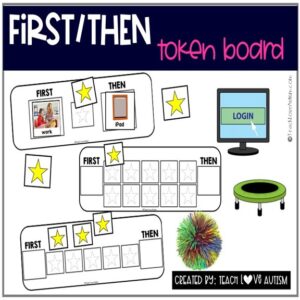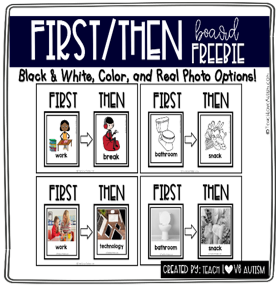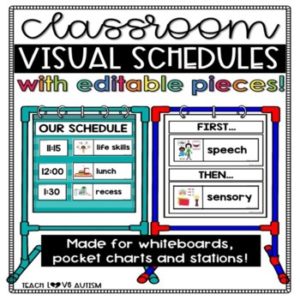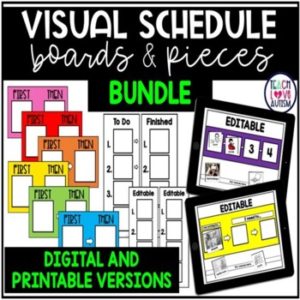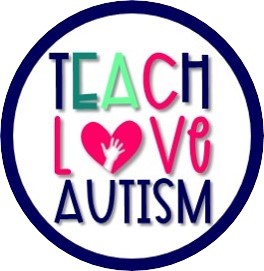5 Strategies for Smoother Transitions in the Classroom

Welcome Abby from Mrs. Moe’s Modifications as she guest blogs all about strategies for smoother transitions in the classroom! Check out her full blog here.
Transitions can be tough for many students, especially those with Autism, who may struggle with unexpected changes or shifting from one activity to another. Whether it’s moving from recess to classroom time or switching from one task to the next, these moments can lead to frustration, anxiety, and behavioral challenges. However, the good news is that there are simple, effective strategies for smoother transitions.
While this post is geared towards supporting students with autism spectrum disorder, these strategies are beneficial for all students, regardless of diagnosis. Every child can benefit from more structure, predictability, and reinforcement during transitions. By implementing these techniques, you can create smoother, more manageable transitions for your classroom or at home, leading to a more successful and calm learning environment. Let’s dive into 10 strategies that can make a big difference!
Transition Strategies
#1 The Pause Button
Introducing a physical pause button symbol, like a laminated card or sign, can be a powerful tool for strategies for smoother transitions. The pause button signals to students that the current activity isn’t finished forever—it’s just a temporary stop before moving on to the next task. This can reduce anxiety by reassuring them that they may return to the activity later if needed.

Since many kids are already familiar with the concept of pausing from watching videos or playing video games, this strategy will feel relatable and easy to understand. To make it even more effective, practice using the pause button during both calm times and more challenging transitions so that it becomes a natural part of their routine.
I like it print out a larger pause button and I will place it onto the work or activity that it being done. It is important that when you first introduce this it is not when it is actually time to pause and transition. It is important that the expectations are reviewed prior to it. But I will say that students have picked up on this very fast. If it is a toy or game, consider leaving the pause button on it and physically keeping it there until it is time to play again. This can really solidify the meaning of the pause button and show them that they will get to do it again!
#2 Provide Choices
Offering choices during transitions gives students a sense of control, which can ease their anxiety and resistance. For example, you might ask, “Would you like to walk or hop to the next activity?” “Would you like 2 or 3 more minutes on this worksheet?” or “Do you want to walk with me or your friends?”

By allowing them to make small decisions, you’re empowering them to take ownership of the transition and making it feel less overwhelming.This is one of the strategies for smoother transitions that is crucial to use. It’s important, though, to keep these choices structured and manageable to avoid overwhelming them with too many options.
The choices should still be getting them closer to the desired outcome. For example, asking them if they want to walk like a penguin or elephant both get them walking in the direction you want them to go.
Choices should like an easy intervention, but many times they can lead to power struggles. In order to avoid a power struggle, read this blog post that outlines them even more.
#3 Use a Timer to Support Strategies for Smoother Transitions
Using visual timers are tools that works for all students, so it is a tool that can be used in every classroom- no matter the age! Timers can help students in high school with time management so they are not asked to transition right in the middle of a project. Timers such as countdown clocks or sand timers make the concept of time more concrete for younger students who may struggle with abstract time cues.

As the countdown timer winds down, students gain a clear sense of when the transition will happen, reducing the surprise or anxiety of switching tasks. Give gentle reminders as the timer approaches zero—like saying, “Two more minutes before we clean up”—so they know what to expect. Pairing the timer with positive reinforcement when students respond appropriately, such as, “You stopped right when the timer went off—great listening!” can further encourage smoother transitions.
Even using a timer to help students learn the skill of waiting and is one of the many strategies for smoother transitions that works. This is something that can be so hard for our students because it is an abstract concept. And it is even harder for adults! Usually, adults wait and then talk on their phones or make small talk with people around them. In classrooms, students are often asked to wait before they transition. Using a timer or another type of visual support like this can help students understand the concept of time and then make the transition easier.
Here are a few of my favorite types of timers:
Teaching students the skill of learning to wait is a skill that is going to help them in their daily life, not just in school.
Many times autistic children will not be able to process the verbal cues you provide to them, so this visual cue can help with the transition process and make many daily routines easier.
#4 Use First Then Boards
A First-Then board is a straightforward visual tool that helps students anticipate what’s coming next. It is easy to implement and use and can be used with just a whiteboard! For instance, you might show the student, “first worksheet, then outside.” This clear format reassures students about what’s happening now and what to expect next, reducing the anxiety often associated with transitions. The beauty of the first-then board is its versatility; it can be used repeatedly throughout the day, not just during difficult transitions or when a student is showing signs of problem behavior. For example, you can use it when moving between subjects, from one classroom to another, or even during breaks.
-
 First/Then Token Board$0.00
First/Then Token Board$0.00 -
 First/Then Board$0.00
First/Then Board$0.00
By incorporating the First-Then board as a regular part of the daily routine, students can start to rely on its structure and predictability, which builds comfort and confidence over time. Keep the board simple and easy to read, using pictures or text based on each student’s abilities. As students complete the “first” task, reinforce their accomplishment with positive reinforcement that is the “then” task. Consistent use throughout the day helps students feel more secure with transitions, making them less intimidating and more routine.
These can even be effective tools in helping students transition off of a preferred activity. You can use the first- then board to show that once they do their math, they can then return back to watching their video. First math, then video. This can make getting off the video to actually do math a tad easier.

All team members must be using this language and using the if-then in the same way. The best way is to do the work then the reward, but this can be tweaked for specific needs. Some students just need to know what is coming so they may be okay with hearing first math then writing.
#5 Use a Visual Schedule to Support Strategies for Smoother Transitions
Visual schedules are powerful tools for helping students navigate their day by showing them exactly what to expect. By laying out each activity in order, a visual schedule allows students to see what’s coming next, reducing the uncertainty that often causes resistance to transitions. The schedule can be customized to the student’s needs and preferences—some may benefit from picture icons, while others might prefer text. Be sure to give the schedule type that the student can access (or understand) even when they are upset. This means if a student is just learning to read, they need pictures and not just text.

Using a visual schedule consistently throughout the day helps students feel more secure as they can check off each activity as they go, giving them a sense of accomplishment and progress. It can help students prepare for an upcoming transition by seeing what follows it.
This structure is especially useful for students who rely on predictability; knowing what’s next can significantly ease transitions. If there is a change, having it on the students’ schedule can help with the change as opposed to just verbally telling them. The students learn they can rely on their schedule, and even if it is different day to day what is on it is what will happen for that day.
-
 Classroom Visual Schedule and Station Cards for Special Education$4.50
Classroom Visual Schedule and Station Cards for Special Education$4.50 -
Sale Product on sale
 Editable Visual Schedule Boards and Pieces for Autism or Special Education Bundle
Editable Visual Schedule Boards and Pieces for Autism or Special Education Bundle$15.00Original price was: $15.00.$13.25Current price is: $13.25. -
 Editable Visual Schedule for Special Education & Autism | Daily Routine Schedule (Printable and Digital Version)$13.95
Editable Visual Schedule for Special Education & Autism | Daily Routine Schedule (Printable and Digital Version)$13.95
Regularly referring to the schedule helps reinforce its purpose, and over time, students may even begin using it independently. By establishing the schedule as a routine part of their day, you’re building a supportive framework that guides students smoothly from one activity to the next. Learn more about visual schedules over on this blog here.
Love these strategies? But still, wishing there were more ideas? Check out part 2 of this blog with 5 More Strategies for Smoother Transitions in the Classroom.



